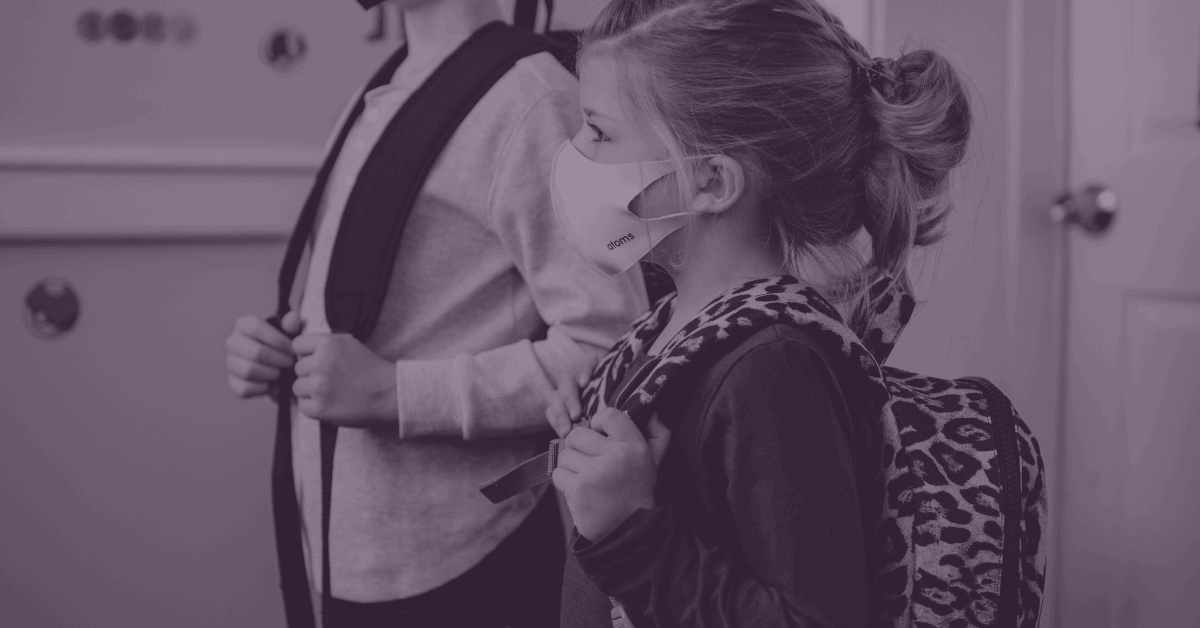
Photo by Kelly Sikkema on Unsplash
School buses are rounding the corner. Backpacks are filling up with fresh supplies. That’s right—school is back in session. But the 2021 back-to-school season is set to be a unique one with the return to in-person learning for much of the United States. In fact, a nationwide education and labor survey by the RAND Corporation revealed that 89% of parents plan to send their children back to school in-person—even as 61% report that they’d like to know more about their child’s school’s COVID-19 safety measures this fall.
While these prevailing concerns about COVID-19 mean students, parents and teachers won’t see a complete return to normalcy this school year, the transition back to the classroom does mark a big shift from the virtual environments that have characterized pandemic-era education. During this period, education technology (EdTech) companies stepped up to provide solutions so schools could continue remotely, including:
- AspectO offered an AI solution that could analyze student audio and video streams to gauge their level of focus, interaction, and attention, fellow students and provide feedback in real-time to improve online instruction.
- Outschool, an online platform with over 100,000 virtual extracurricular activities, saw registrations skyrocket from 80,000 to 1.6 million between March and October of 2020.
For over a year and a half, EdTech marketing and communications spoke directly to the need to rapidly adapt to virtual learning. But now that schools are reopening their doors, do EdTech companies need to adjust their marketing and communications? The short answer is yes. And in this blog, we’ll look at three aspects to keep in mind when shaping your messaging for the coming school year.
1. Speak to flexibility in learning
A June-July 2021 survey by EducationWeek showed that 88% of school leaders had planned to implement full-time, in-person instruction this school year, with only 10% planning to offer hybrid options for students. Just one month later, a follow-up survey by EducationWeek showed the number of leaders implementing hybrid options had doubled to 20% and those solely doing in-person learning fell to 79%.
What these results demonstrate is that situations are constantly changing. School leaders are monitoring the news—including the spread of the Delta variant, case numbers and CDC recommendations—to make decisions in the best interest of their students and staff. There have notably been instances of schools reopening briefly only to go back to virtual learning due to emerging COVID-19 cases.
For EdTech companies, consider these uncertainties and speak to how your solutions work just as well at home as in the classroom, offering schools the flexibility to pivot as needed. Case studies are an impactful way of illustrating this message. So, share stories of how you’ve helped school districts make a seamless transition between the physical and virtual classroom or enabled a successful blended experience.
2. Show empathy to returning students and teachers
While the back-to-school season often comes with a mix of excitement and anxieties, this fall comes with the weight of some notable struggles with mental health and learning. Teachers and students did their best to manage under unprecedented circumstances but faced challenges ranging from feelings of social isolation to widening learning gaps among students who did and didn’t have access to digital tools and good internet at home.
According to a OnePoll survey for Office Depot, three-fourths of K-12 American teachers are more worried than ever about how prepared their students will be for the coming semester. Further, 57% are concerned that students may have fallen behind academically over the past year.
As you craft your EdTech marketing and messaging, be mindful of issues like student mental health and the digital divide. Proactively addressing these issues conveys awareness and empathy to current and prospective customers. As we noted in our EdTech Marketing & Communications Guide, make these topical concerns part of your Corporate Social Responsibility (CSR) initiatives so you can offer solutions and honestly speak to them in the market.
3. Think of how and why you’re inspiring positive change
While pandemic-era education has presented its challenges, it also accelerated EdTech adoption. According to Michael Chasen, co-founder of Blackboard, “This has sped the adoption of technology in education by easily five to 10 years.” After using these tools, it’s unlikely that teachers and students will just go back to the way things were before. As Chasen notes, “You can’t train hundreds of thousands of teachers and millions of students in online education and not expect there to be profound effects.”
When the COVID-19 pandemic is relegated to the history books, schools will continue to invest in EdTech solutions that present more than short-term fixes. These are solutions that lead to positive change in the classroom.
For instance, Newsela is an instructional content platform that allows teachers to assign reading materials with five different literacy levels available for each article. Students can choose the best level for them, develop their reading skills independently and still participate in classroom discussion. There’s also Kahoot, which has emerged as a leader in gamifying learning, providing a platform for teachers to reinforce knowledge with points, leaderboards and badges. These gaming dynamics have proven effective at boosting engagement, participation, and motivation, helping students to learn better without them even realizing it.
As you examine the messaging and positioning of your own technology, think about how and why you’re creating positive change for teachers and students. Are you solving an age-old problem like keeping students motivated? Or, are you offering a completely new approach to learning? Get to the heart and mission of your solution, which will resonate in the coming school year and beyond—in your thought leadership, media interviews, customer stories and content.
Looking for additional insight on how to increase your brand exposure and reach more buyers in today’s booming EdTech market? Contact Suzanne Block to learn about our Emerging Technology Practice.
